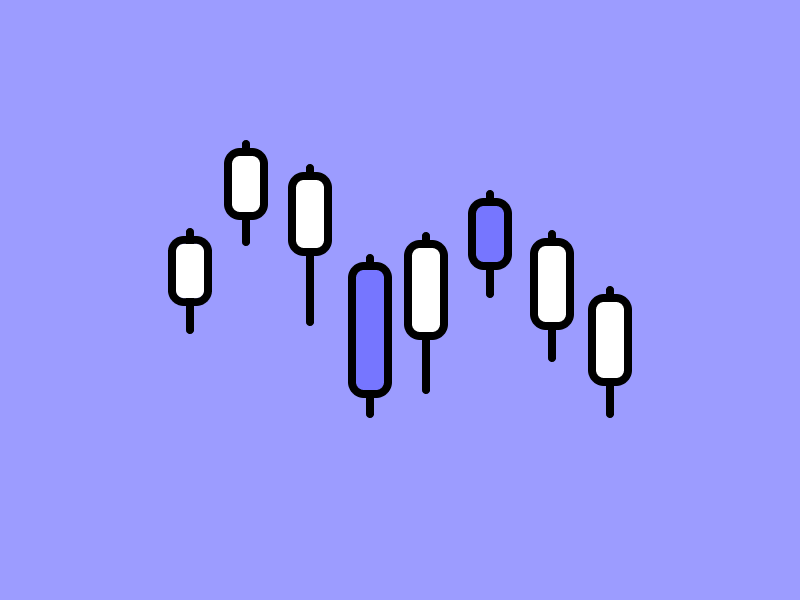Solana DePIN Ecosystem: A Potential Sleeping Giant
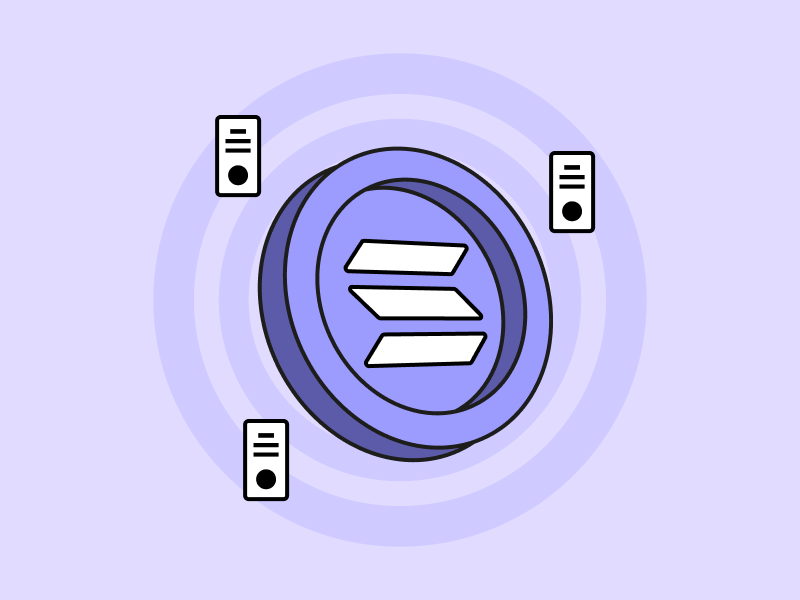
The DePIN (Decentralized Physical Infrastructure Network) sector is heating up, fueled by a surge in promising new protocols. Interestingly, the majority of these projects are built on the Solana blockchain. This article explores the reasons behind Solana’s dominance in DePIN. It also delves into some of the most exciting DePIN protocols emerging on the Solana blockchain.
Article Summary
- 🌐 DePIN is a concept that uses token rewards and blockchain technology to encourage physical infrastructure development in the real world.
- 🔥 There are 650 existing DePIN projects as of the end of 2023. Most of them are built on the Solana blockchain.
- 💪 Four potential DePIN projects on Solana that are worth watching are Hivemapper, Nosana, Grass, and io.net.
- ✨ It is believed that the DePIN sector is in its early phase, leaving much room for future growth.
About DePIN
DePIN is a concept that uses token rewards and blockchain technology to encourage physical infrastructure development in the real world. Examples of physical infrastructure include wireless networks, cloud services, mobility networks, and power grids.
The DePIN project seeks to solve some of these problems by utilizing blockchain technology, token incentives, and the power of the internet. A key feature of DePIN is the shift from the traditional centralized model to a decentralized one. It involves global user participation to overcome dependency on large entities and implement a ‘sharing economy’ model.
You can read complete information about DePIN and how it works in the following article.
DePIN Development
DePIN is projected to be one of the sectors that will have a promising outlook in the long run. Based on research made by Messari, DePIN managed to record the various growth metrics that supported this assumption.
First, the DePIN ecosystem already has over 650 projects across six subsector at the end of 2023. It is divided into Computing (250), artificial intelligence (200), wireless (100), sensors (50), energy (50), and services (25). (50), and services (25).
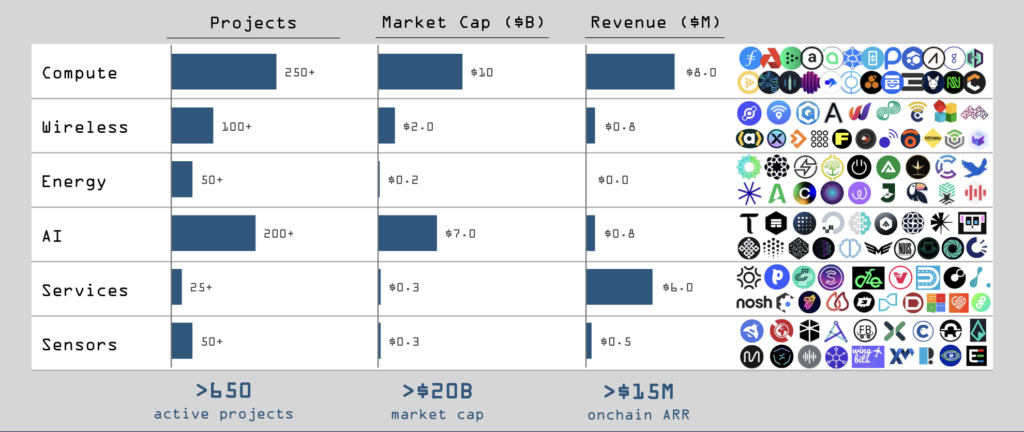
Secondly, DePIN has a more resilient revenue even in a bearish market. Additionally, its revenue comes from its utility value rather than speculation value. According to Messari, revenues from other sectors can drop steeply by 70-90%. As for DePIN, its revenue decline is relatively milder, ranging from 20-60% of its peak.

Third, the aggregate market capitalization of the DePIN sector, including its liquid tokens, has passed US$20 billion, generating annual on-chain revenue of around US$15 million. Solana is currently the home to a variety of large and established DePIN projects.
Solana as Home of the DePIN Projects
The DePIN developers’ main reasons for choosing Solana are its integrated infrastructure, good scalability & performance, and strong community support.
Render, Helium, and Hivemapper are the three largest DePIN projects on the Solana network. Combined, they have a total Fully Diluted Valuation (FDV) of more than $10 billion with a market capitalization of US$4 billion.

The four factors that made the DePIN project choose the Solana blockchain are as follows:
- Performance. The DePIN project requires high throughput rates and low fees to fulfill their micro-payments needs. Solana is one of the best scalable and low-cost blockchains.
- Network effects. Helium’s migration from their native blockchain to Solana allows the rest of the DePIN developer teams to utilize Helium’s open-source tools. In addition, the existence of the existing DePIN community is also beneficial for other DePIN projects.
- Robust Ecosystem and Token Standard. Solana has a dynamic ecosystem with a proven DEX. In addition, it also has token standards and token extensions that can complement the needs of DePIN projects to develop and launch their on-chain products.
- Solana Mobile. The DePIN project can reach more users by integrating its apps with Solana Mobile.
In addition to DePIN, Solana is also home to a variety of memecoin projects. Find out how to choose anti-rugpull memecoins here.
Potential DePIN Protocols on Solana
The following are some potential DePIN projects on the Solana ecosystem:
1. Hivemapper
Hivemapper is an AI-based DePIN protocol that collects street map data around the world using vehicle dashcams. For interested users, they can purchase the dashcam for $469-$569. Users then record and share footage and metadata to Hivemapper. In return, they will receive HONEY tokens.

In addition to capturing street footage, users can participate by training the Hivemapper AI model through data labelling and editing. Similar to sharing footage, users can also earn HONEY by training the Hivemapper AI.
So far, Hivemapper has mapped 19% of the streets around the world with more than 130,000 contributors. The street maps can be used by companies like autonomous car manufacturers, insurance, logistics, and real estate according to their respective needs
2. Nosana
Nosana is a marketplace that provides affordable GPUs for users who want to train or develop their AI. Meanwhile, GPU owners can rent out their GPUs in exchange for rewards. Nosana also provides users with a variety of additional tools to help them maximize their GPU resources.
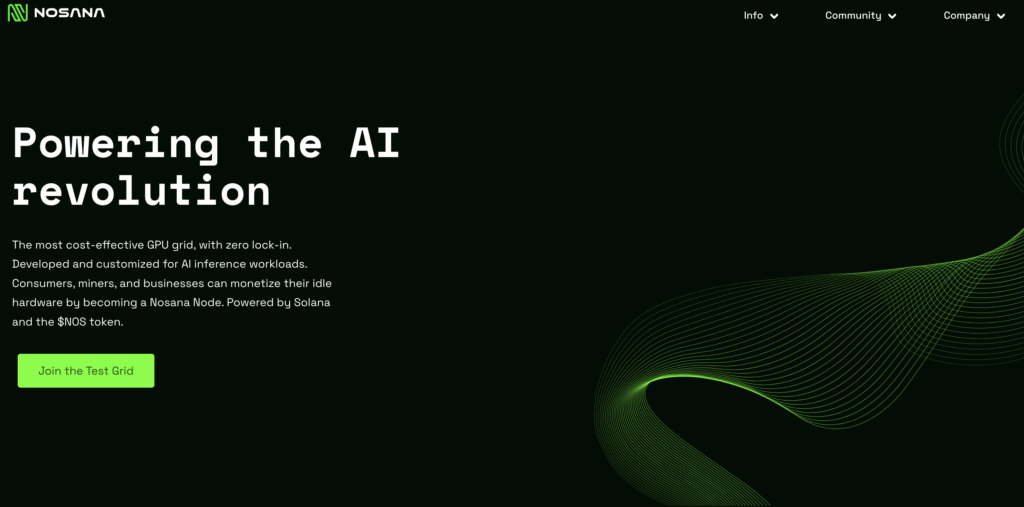
Furthermore, the Nosana interface has also been integrated with Stable Diffusion and Llama 2, which can significantly reduce costs. Based on their testnet data, the developer team can save costs up to 85% compared to using conventional cloud infrastructure providers.
NOS, which is the native token in the ecosystem, is used as a payment medium for GPU renters and GPU owners. In addition, NOS owners can also participate as nodes by staking their NOS tokens to earn rewards.
Currently, Nosana is still in the testnet phase. However, the Nosana main grid is predicted to be released in the second quarter of 2024. In addition to the marketplace, the main grid will also feature various toolkits, such as the Software Development Kit (SDK) and Command Line Interface (CLI).
One of the biggest DePIN GPU projects right now is Render. Learn more about the technology and how it works in this article.
3. Grass
Training AI models requires processing large datasets. To accelerate the process, many AI training labs utilize scrapping over the internet. Grass, as a data provisioning layer protocol, provides an infrastructure that allows them to be the source for such AI model training.
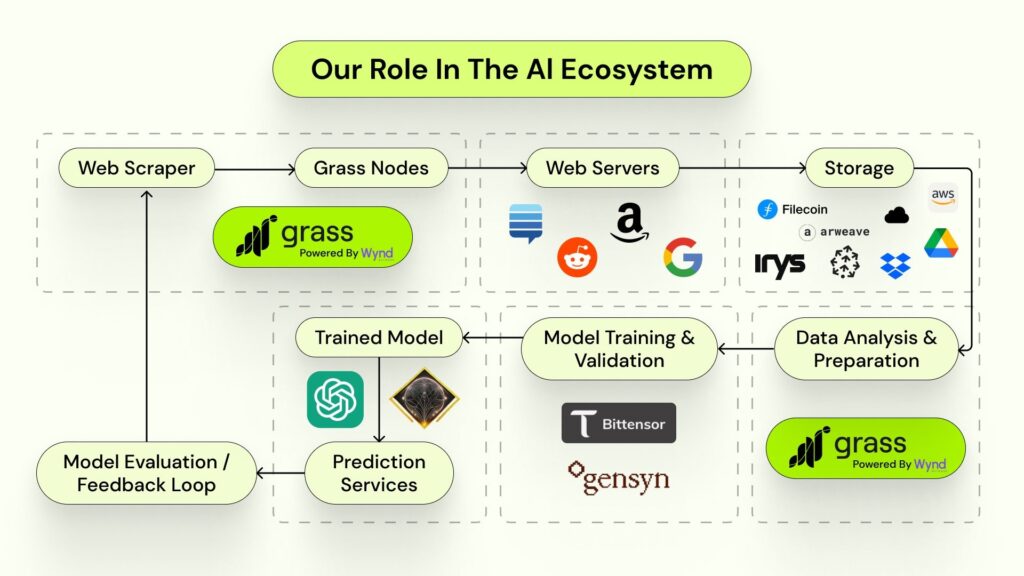
Grass collects unused internet bandwidth from its users and sells it to AI companies. The unused bandwidth is used to scrap the internet and train AI models. Meanwhile, Grass users get points in exchange for providing unused internet bandwidth.
Currently, Grass does not have native tokens but is predicted to distribute airdrops to its users soon. There are speculations that the points earned by users will factor into the criteria for receiving Grass token airdrops. According to data from Whales Market, one Grass point is estimated to be valued at around $0.0015 – $0.0020. Based on this estimate, 10,000 Grass points would be worth approximately $15-$20.
Grass and the buyers of unused bandwidth guarantee user privacy and data protection. For Grass privacy and security information, you can read the explanation here.
If you’re interested in Grass and looking for an airdrop, here are the steps you can take:
- Create a Grass account first via the following link: https://app.getgrass.io/register/?referralCode=ptHfKdbt8iLMplq
- Download Grass extensions via the following link: https://chromewebstore.google.com/detail/grass-extension/ilehaonighjijnmpnagapkhpcdbhclfg?hl=en&authuser=0
- Complete the installation and let Grass operate in the background when your device is on and connected to the internet. You will automatically earn points every day.
4. IO Net
Io.net is a unique protocol that creates a network to harness the computing power of GPUs for machine learning applications. It integrates GPU networks from data centres, crypto miners to established projects like Render. It is making io.net as a GPU aggregator.
What makes io.net stand out from conventional GPU aggregators is its ability to group hundreds to thousands of GPUs into a single cluster. This cluster then functions as a unified unit that is specifically designed to handle machine learning workloads.
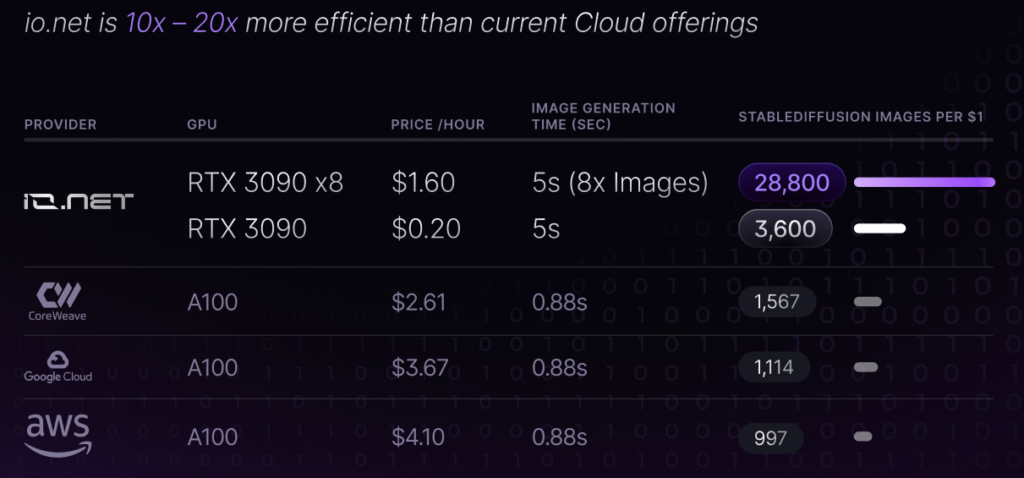
Developers can access massive computing power through io.net, a system that is affordable, customizable, and easy to use. Additionally, GPU providers can earn rewards by renting out their GPU resources.
io.net is an anticipated project that will soon conduct a Token Generation Event (TGE). Here is one of the predictions regarding the criteria to be eligible for the IO token airdrop:
DePIN Futures
According to CoinDesk, Borderless Capital, a venture capitalist, believes that the current adoption and usage rate of the DePIN protocol is still at an early stage. In fact, they have allocated a fund of US$100 million to support the growth of the DePIN ecosystem in Solana.
"We see the DePIN sector has tremendous potential going forward. They have an efficiency advantage that allows them to have lower-cost and better services for end users," said David Garcia, Managing Partner at Borderless.
On the other hand, future upgrades to Solana’s technology will also further improve its throughput speed and scalability. As Solana’s network becomes more efficient, the quality of service and reach of DePIN projects can also expand. Ultimately, this could boost the adoption rate and value of DePIN projects’ use cases.
However, there are also concerns with the incentivization model used by DePIN projects. As we know, DePIN projects use the mechanism of awarding points or their native tokens to attract users.
The fluctuation of token prices can be a factor in reducing users’ interest in the DePIN project. If the rewards obtained from the project are no longer considered attractive and comparable, users can slowly move away from it.
Besides DePIN, the RWA sector is also believed to have great use cases and potential. What are the reasons for this? Find out the answer here.
Buy Crypto Assets on Pintu
Looking to invest in crypto assets? No worries, you can safely and conveniently purchase a wide range of cryptocurrencies such as BTC, ETH, SOL, and others safely and easily on Pintu. Pintu diligently evaluates all its crypto assets, highlighting the significance of being cautious.
Pintu is also compatible with popular wallets such as Metamask to facilitate your transactions. Download Pintu app on Play Store and App Store! Your security is guaranteed because Pintu is regulated and supervised by Bappebti and Kominfo.
Aside from buying and trading crypto assets, you can expand your knowledge about cryptocurrencies through various Pintu Academy articles. Updated weekly, all Pintu Academy articles are made for knowledge and educational purposes, not as financial advice
References
- Salvador Gala, State of DePIN 2023, Messari, acccessed on 25 April 2024.
- Superteam DAO, SOLANA 🤝 DEPIN, X, acccessed on 25 April 2024.
- Lylah Ladesma, ‘DePIN’ Is Venture Capitalists’ Latest Crypto Obsession. Can It Match the Hype? Coindesk, acccessed on 25 April 2024.
- Nosana Docs, Introduction to Nosana, acccessed on 26 April 2024.
- io.net Docs, io.net Overview, acccessed on 26 April 2024.
- Hivemapper Docs, Introduction to Hivemapper, acccessed on 26 April 2024.
- Getgrass Blog, Grass: The First Ever Layer 2 Data Rollup, acccessed on 26 April 2024.
Share

